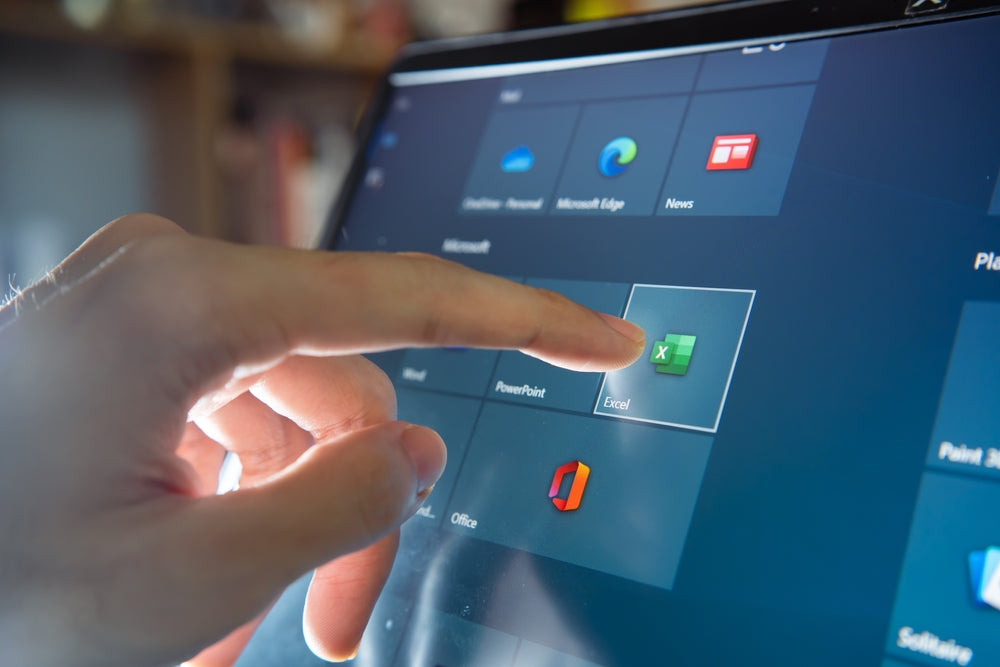
What are the types of touch technology?
Touchscreen technology has revolutionized the way we interact with devices, offering a seamless user experience across various sectors, from smartphones and tablets to interactive kiosks and smart appliances. Touch panels (TP) are integral to this transformation. In this article, we explore the different types of touch technologies, how they are integrated with display screens, and the key materials used in manufacturing touch sensors.
1. Types of Touch Technologies by Technical Principle
Touchscreen technology can be classified based on the principle behind the touch sensor’s operation. The most common types include:
1.1 Resistive Touch
Resistive touch technology uses pressure to detect input. It consists of two conductive layers separated by a small gap. When pressure is applied, the layers make contact, allowing the system to identify the touchpoint. This technology is robust and reliable but tends to be less responsive compared to other methods.
1.2 Capacitive Touch
Capacitive touch technology relies on the electrical conductivity of the human body. When a user touches the screen, it changes the local electrostatic field, which the system detects to register input. Capacitive touch is more sensitive and responsive than resistive touch. It is further divided into:
• Surface Capacitive Touch: A simpler version where a single layer detects changes in capacitance.
• Projected Capacitive Touch (P-Cap): More advanced, offering higher sensitivity and multi-touch capabilities. P-Cap is widely used in smartphones, tablets, and modern touch devices due to its simplicity and superior performance.
1.3 Optical Touch
Optical touch technology uses infrared light sensors placed around the screen’s edges to detect touchpoints. This method allows for multi-touch support, but it can be more expensive and less commonly used than capacitive or resistive technologies.
1.4 Surface Acoustic Wave (SAW) Touch
SAW technology works by sending ultrasonic waves across the screen surface. When a touch occurs, it disrupts the waves, allowing the system to detect the exact location. This type of touchscreen is highly durable and provides excellent image clarity.
1.5 Electromagnetic Resonance (EMR) Touch
Electromagnetic resonance technology uses an electromagnetic pen or stylus to interact with the screen. It’s commonly used in devices that require precise input, such as graphic tablets. The pen generates a signal that is picked up by the screen, making it ideal for artists and designers.
2. Integration of Touch Sensor with Display
There are several methods to integrate touch sensors with display panels. These integration techniques impact the overall performance, sensitivity, and thickness of the device.
2.1 Add-On Technology
Add-on touch technology refers to touch sensors that are attached to the display as a separate component. This can be done through adhesive or lamination. Various sensor technologies, such as resistive and capacitive, can be used in add-on touchscreens. Popular forms include:
• OGS (One Glass Solution): A glass-based touch sensor that integrates the touch and display layers, offering a thinner and lighter design.
• GFF (Glass+Film+Film): In this method, the sensor is created on a film, with two layers of film adhered to a glass substrate. This design enhances durability and reduces weight.
• GF2: A variation of GFF, where electrodes are created on both sides of a single film, offering improved touch accuracy.
2.2 On-Cell Technology
On-cell touch technology integrates the touch sensor directly on the surface of the liquid crystal display (LCD) or its protective layer. This structure requires transparent conductive materials like ITO (Indium Tin Oxide) or ultra-thin metal wires to avoid reducing light transmission.
2.3 In-Cell Technology
In-cell technology incorporates the touch sensor inside the LCD panel. This technology offers a streamlined design and is commonly used in small and medium-sized devices such as smartphones. Recently, it has gained traction in larger formats like interactive whiteboards and digital signage due to its simplicity and performance benefits.
2.4 Hybrid Technology
Hybrid technology combines multiple touch methods to optimize performance. For instance, one electrode layer can be integrated inside the display while another is added externally, working together to enhance touch sensitivity and accuracy.
3. Touch Sensor Materials
The performance of touch panels is highly dependent on the materials used to create touch sensors. The ideal material must provide both high optical transparency and low electrical resistance.
3.1 Indium Tin Oxide (ITO)
ITO is the most commonly used material for touchscreens due to its excellent conductivity and transparency. It is frequently used in both resistive and capacitive touch technologies.
3.2 Nano Silver
Nano silver is an emerging material offering improved transparency and lower resistance than ITO. It allows for thinner and more flexible displays, making it ideal for foldable or curved touchscreens.
3.3 Metal Mesh
Metal mesh technology uses a grid of ultra-thin metal wires, offering lower resistance and higher durability than ITO. This material is ideal for larger touchscreens where ITO may struggle with conductivity.
3.4 Carbon Nanotubes
Carbon nanotubes provide excellent electrical properties and flexibility. Though still in experimental stages for widespread use, they offer great potential for the future of touch sensor materials.
Conclusion
Understanding the different touch technologies, integration methods, and sensor materials is essential for selecting the right type of touchscreen for any application. From resistive to capacitive touch and from ITO to nano silver, each technology has its own strengths and trade-offs. As the demand for responsive, accurate, and durable touch panels grows, innovations in this field will continue to shape the future of interactive displays.
